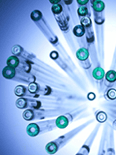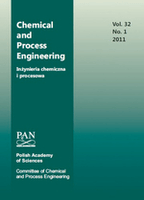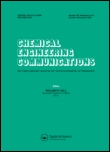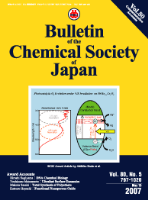
Annual Review of Chemical and Biomolecular Engineering
metrics 2024
Pioneering Insights for Tomorrow's Chemical Challenges
Introduction
The Annual Review of Chemical and Biomolecular Engineering, published by Annual Reviews, serves as a cornerstone for advancing knowledge in the fields of chemical and biomolecular engineering. With an impressive impact factor, notable Scopus rankings placing it in the 96th percentile for chemical engineering and the 93rd for general chemistry, this journal offers a wealth of peer-reviewed articles that encompass cutting-edge research and critical reviews. Spanning from 2010 to 2024, it covers a wide variety of topics, including the sustainability and environmental impact of chemical processes, thus affirming its relevance in contemporary science. While it operates under a traditional subscription model, the rigorous standards upheld by the journal ensure that every contribution adds significant value to both academic and practical pursuits in chemical engineering and related fields. Researchers, professionals, and students alike will find indispensable insights within its pages, solidifying its position as a premier resource for those dedicated to innovation and excellence in chemical and biomolecular sciences.
Metrics 2024
 1.90
1.90 7.60
7.60 9.00
9.00 78
78Metrics History
Rank 2024
Scopus
IF (Web Of Science)
JCI (Web Of Science)
Quartile History
Similar Journals

KOREAN JOURNAL OF CHEMICAL ENGINEERING
Shaping Tomorrow’s Chemical Engineering Landscape.The Korean Journal of Chemical Engineering is a prestigious publication by the Korean Institute of Chemical Engineers, dedicated to advancing the field of chemical engineering and its associated sciences. Established in 1984, this journal has made significant contributions to the dissemination of innovative research, covering a broad spectrum of topics within chemical engineering and general chemistry. With a current impact factor placing it in the Q2 quartile within both the chemical engineering and chemistry categories, it is recognized for its rigorous peer-review process and high-quality articles. The journal provides a valuable platform for researchers, professionals, and students to share their findings and collaborate on emerging methodologies and technologies. Although it does not offer open access options, its broad international readership, bolstered by its Scopus rankings — including a commendable #108 in general chemical engineering — ensures widespread visibility and dissemination of published works. As it approaches its 40th anniversary in 2024, the Korean Journal of Chemical Engineering continues to be an essential resource for anyone engaged in the field, driving innovation and academic dialogue worldwide.

Chemical and Process Engineering-New Frontiers
Exploring Novel Methodologies in Process EngineeringChemical and Process Engineering-New Frontiers, published by POLSKA AKAD NAUK and the POLISH ACAD SCIENCES, is a premier academic journal dedicated to advancing the frontiers of chemical engineering and chemistry. With an ISSN of 0208-6425 and an E-ISSN of 2300-1925, this journal serves as a crucial platform for disseminating cutting-edge research and innovative practices in the field. Despite its Q4 ranking in both Chemical Engineering and Chemistry categories and a low percentile ranking in Scopus, the journal aspires to enhance visibility and impact in the scientific community through its focus on novel methodologies and groundbreaking studies. Operating as a traditional journal without open access, it aims to connect researchers, professionals, and students, fostering collaboration and knowledge exchange. With a commitment to publishing impactful research, Chemical and Process Engineering-New Frontiers plays an important role in shaping the future of chemical processes and engineering advancements.

AICHE JOURNAL
Shaping the Future of Sustainable Engineering PracticesAICHE JOURNAL, published by Wiley, is a premier academic journal that has been at the forefront of chemical engineering research since its inception in 1955. With an ISSN of 0001-1541 and an E-ISSN of 1547-5905, this esteemed journal has carved a niche within several vital fields, boasting a 2023 categorization of Q1 in Chemical Engineering (Miscellaneous), Q2 in Biotechnology, and Q2 in Environmental Engineering. The journal’s significant impact is demonstrated through its Scopus rankings, particularly its rank of #62 in General Chemical Engineering and #54 in Environmental Engineering, showcasing its influence and reach in these disciplines. Although not available as Open Access, AICHE JOURNAL plays a critical role in disseminating cutting-edge research essential for advancing knowledge and practice among professionals, researchers, and students in chemical and environmental engineering realms. With convergence expected until 2024, it remains a vital resource for the latest developments, methodologies, and innovations that shape the future of technology and sustainability in the scientific community.

Frontiers in Chemical Engineering
Advancing the Frontiers of Chemical InnovationFrontiers in Chemical Engineering is an esteemed open-access journal published by Frontiers Media SA, dedicated to advancing knowledge in the dynamic field of chemical engineering. Since its inception in 2019, this journal has rapidly gained recognition for its rigorous peer-reviewed articles and innovative research contributions, achieving notable quartile rankings such as Q2 in Chemical Engineering and Q3 in both Bioengineering and Catalysis by 2023. With an emphasis on providing accessible and cutting-edge research, the journal caters to a diverse audience of researchers, professionals, and students interested in the latest developments and methodologies within the chemical engineering discipline. Hailing from Lausanne, Switzerland, Frontiers in Chemical Engineering embodies a commitment to enhancing collaborative scientific communication, making crucial research findings available without barrier. By publishing high-quality articles that address both theoretical advancements and practical applications in chemical engineering, this journal serves as a pivotal resource for fostering innovation and collaboration across the global research community.

Green Chemical Engineering
Transforming chemical engineering with eco-friendly insights.Green Chemical Engineering, an esteemed journal published by KEAI PUBLISHING LTD, plays a pivotal role in advancing the field of sustainable chemical engineering. With an Open Access policy since 2020, this journal facilitates the free exchange of cutting-edge research and innovations that address critical environmental challenges. Based in China, it has rapidly gained recognition with impressive category quartiles, ranking Q1 in numerous relevant fields including Catalysis, Chemical Engineering (miscellaneous), Filtration and Separation, and Process Chemistry and Technology. Its presence in Scopus highlights its significance, with top rankings (e.g., Rank #4/19 in Filtration and Separation) placing it in the upper echelons of chemical engineering literature. Designed for researchers, professionals, and students alike, Green Chemical Engineering aims to foster a collaborative platform for the dissemination of pioneering work that contributes to a greener and more sustainable future.

CHEMICAL ENGINEERING COMMUNICATIONS
Pioneering Research for a Sustainable Future.Chemical Engineering Communications, published by Taylor & Francis Inc, is a distinguished journal within the realms of Chemical Engineering and Chemistry. With an ISSN of 0098-6445, this journal plays a pivotal role in disseminating innovative research, critical reviews, and insightful discussions that encompass a broad spectrum of topics in these fields. The journal boasts a commendable Q2 ranking in the 2023 category of chemical engineering and general chemistry, reflecting its significant contribution to the scientific community. Operating under a rigorous peer-review process, the journal attracts high-quality submissions from global researchers. Although currently not an Open Access journal, it provides extensive archive access for users interested in exploring past advancements from its inception in 1973 through to 2024. With a commitment to advancing knowledge and fostering collaboration among academia and industry, Chemical Engineering Communications remains an essential resource for professionals and students aiming to stay abreast of the latest developments in chemical sciences.

CHEMICAL AND BIOCHEMICAL ENGINEERING QUARTERLY
Empowering Researchers with Cutting-Edge InsightsCHEMICAL AND BIOCHEMICAL ENGINEERING QUARTERLY, published by the Croatian Society of Chemical Engineering Technology, is a distinguished open-access journal that has been providing a platform for the dissemination of innovative research since its inception in 1987. With a focus on the fields of biochemistry and chemical engineering, this quarterly journal addresses a wide array of topics, including process chemistry and technology, making significant contributions to both academia and industry. Despite its current positioning in the Q4 category for biochemistry and Q3 for miscellaneous chemistry and process chemistry in 2023, the journal continues to strive for greater impact, catering to researchers, professionals, and students alike. Its open-access model, in place since 2001, ensures that cutting-edge research is accessible to a broad audience, fostering collaboration and knowledge sharing within the scientific community. By promoting high-quality research and providing insights into the latest advancements, Chemical and Biochemical Engineering Quarterly remains an essential resource for those involved in the chemical and biochemical engineering disciplines.

JOURNAL OF CHEMICAL ENGINEERING OF JAPAN
Catalyzing Knowledge in Chemical ProcessesJOURNAL OF CHEMICAL ENGINEERING OF JAPAN is a distinguished academic publication in the field of chemical engineering and chemistry, published by Taylor & Francis Ltd. With its ISSN 0021-9592 and E-ISSN 1881-1299, this journal has been a vital resource for researchers and practitioners since its inception in 1968 and continues to provide essential insights and advancements through 2024. The journal operates under an Open Access model as of 2023, promoting wider dissemination of research findings and encouraging collaboration within the global scientific community. Currently categorized in the Q4 quartile for both Chemical Engineering and Chemistry (miscellaneous) in 2023, it ranks within the lower percentiles of its respective fields, offering a platform for emerging scholars to publish their work and gain visibility. As part of Japan's academic landscape, it addresses numerous aspects of chemical engineering, fostering innovation and technical development that contribute to the industry's growth. Engaging with this journal is paramount for those looking to stay informed on the latest research trends and applications in chemical processes.

BRAZILIAN JOURNAL OF CHEMICAL ENGINEERING
Advancing the Frontiers of Chemical Engineering ResearchThe Brazilian Journal of Chemical Engineering (ISSN: 0104-6632, E-ISSN: 1678-4383), published by Springer Heidelberg, stands as a prominent open-access journal dedicated to disseminating innovative research and advancements in chemical engineering since its inception in 1997. With a commitment to enhancing knowledge exchange within the field, this journal is indexed in Scopus, earning a respectable Q3 rank in the category of General Chemical Engineering as of 2023. It provides a platform for researchers, professionals, and students to explore a diverse range of topics, fostering collaboration and innovation from its base in Brazil. The journal has converged its operations from 1995 and will continue to push the boundaries of chemical engineering research until 2024 and beyond. As a critical resource for up-to-date methodologies and emerging trends, the Brazilian Journal of Chemical Engineering is essential for those aiming to make impactful contributions in this dynamic and evolving field.

BULLETIN OF THE CHEMICAL SOCIETY OF JAPAN
Catalyzing Progress: Connecting Ideas in ChemistryBULLETIN OF THE CHEMICAL SOCIETY OF JAPAN, published by the esteemed Chemical Society of Japan, serves as a pivotal platform for the dissemination of cutting-edge research in the multifaceted field of chemistry. With an ISSN of 0009-2673 and an E-ISSN of 1348-0634, this journal has been integral in fostering the growth of chemical sciences globally since its inception in 1965. The journal holds an impressive Q2 ranking in the Chemistry (miscellaneous) category, indicating its relevance and influence within the academic community, as reflected by its Scopus rank of #104/408, placing it in the 74th percentile. Although it is not an open-access journal, its rich content, which spans a wide range of topics in general chemistry, remains highly valued by researchers, professionals, and students alike, affirming its crucial role in advancing both theoretical knowledge and practical applications in chemistry. As it converges towards 2024, the bulletin continues to uphold its commitment to excellence in scientific communication and research dissemination in Japan and beyond.